The Great Dane German Shepherd Mix, commonly known as the Great Shepherd, is a unique combination of two well-known breeds. Imagine a dog that combines the size of a Great Dane with the intelligence of a German Shepherd. I have met several of these dogs. They are large and have expressive eyes, making them quite distinctive.
Great Shepherds get their intelligence from their German Shepherd parents, which makes them fast learners and very responsive to training. Their Great Dane side provides a friendly nature, leading to a balanced temperament that is both loyal and sociable. Despite their size, they are known for their kind and friendly disposition.
These dogs do best in large spaces where they can move freely. They are well-suited for active families or individuals who enjoy spending time outdoors, as they need regular exercise to maintain their health and mental well-being.
In this article, I discuss how to care for a Great Shepherd. We cover their training requirements, health issues, and what you can do to make sure they are happy and healthy. If you’re interested in this mix and wondering if a Great Shepherd is the right dog for you, get detailed insights here.
TABLE OF CONTENTS
- Great Dane German Shepherd Mix Quick Summary
- Great Shepherd Parent Breeds
- German Shepherd Great Dane Mix Physical Characteristics
- Great Dane German Shepherd Mix Personality and Temperament
- Dane Shepherd Care Guide
- Dane Shepherd Health Issues
- German Shepherd Great Dane Cost
- Should You Get a German Shepherd Great Dane Mix?
- FAQs on Great Shepherd Mix
- It's Time to Bring a Dane Shepherd Home
Great Dane German Shepherd Mix Quick Summary
Great Shepherd Parent Breeds
From Adobe Stock
Unfortunately, the exact origins of the German Shepherd Great Dane Mix are not currently known. This mix emerged as a result of a crossbreed of two large purebred dogs, a German Shepherd and a Great Dane, which makes the mix a designer breed.
To better understand the key traits of Great Shepherd dogs, it will be useful to take a closer look at German Shepherds and Great Danes separately.
German Shepherd
Origin
The German Shepherd, a breed that has earned its place as one of the most popular dogs worldwide, has a history that is as fascinating as the breed itself. Originating in the late 1800s in Germany, the breed was developed by a cavalry officer with a vision to create the ideal sheepdog for managing stock. This vision transformed into reality, resulting in a breed known not just for its herding abilities but for its versatility in various roles across the globe.
Physical Characteristics
When I think of a German Shepherd, the first image that comes to mind is their majestic and graceful stature. They stand tall, with a height reaching up to 26 inches at the shoulder, embodying both strength and agility. Their physical appearance is further accentuated by their typical coat colors, which often include black and brown. The medium-length double coat of a German Shepherd isn’t just for show; it serves a practical purpose, providing insulation during colder months. This breed’s physical attributes are a perfect blend of functionality and aesthetic appeal.
Temperament and Behavior
The temperament of the German Shepherd is as impressive as their physical characteristics. These dogs are known for their strong work ethic, intelligence, reliability, and calm demeanor. From my interactions with German Shepherds, I can attest to their easygoing nature, which makes them excellent companions and workers. Contrary to what one might expect from such a large breed, they are surprisingly easy to maintain. They generally enjoy good health, require minimal grooming, and possess a mild temper that makes them well-suited for a variety of roles, from family pets to working dogs.
Great Dane
Origin
The Great Dane, a breed synonymous with grandeur and nobility, has a rich history that dates back to a time when they were revered for their hunting prowess, particularly for wild boar hunting. Their evolution over the years is fascinating to me. Initially bred for their strength and hunting abilities, Great Danes have transitioned into companion dogs cherished for their sweet and loyal nature. Tracing back to the 19th Century, these dogs were a symbol of status among the German nobility, often seen guarding estates and assisting in hunting large animals.
Physical Characteristics
Discussing the physical characteristics of Great Danes always brings a sense of awe. They stand even taller than German Shepherds, with a staggering height of up to 32 inches at the shoulder. When these gentle giants stand on their hind legs, they tower over almost any human, a sight that never ceases to amaze me. Their impressive stature, however, does not hinder their grace or agility. Great Danes move with a smoothness and elegance that belies their size, making them one of the most visually striking breeds.
Temperament and Behavior
The temperament of Great Danes is an intriguing mix of playful fun and gentle companionship. Despite their daunting size, they are known for their loving and playful nature. I find that Great Danes thrive in the company of people, often showing a level of affection and loyalty that is heartwarming. Their size might suggest a formidable character, but in reality, they are among the most affable and friendly breeds. They enjoy being part of family activities and are known for their ability to interact well with children and other pets. The Great Dane’s temperament truly defies the stereotypes often associated with large dogs.
German Shepherd Great Dane Mix Physical Characteristics
From Adobe Stock
As the German Shepherd Great Dane Mix is between two dogs that are among the largest breeds today, it takes after its parents. The color palette of Great Shepherds is diverse, ranging from the dark hues of black or brown, reminiscent of German Shepherds, to lighter shades like tan or grey, often seen in Great Danes.
Size and Weight
Great Shepherds can vary in height and weight quite a bit, which will depend both on their genes and their lifestyle. I’ve noticed that these dogs can be between 22 inches and 32 inches (55 cm to 80 cm) at the shoulder and weigh between 60 pounds to as much as over 150 pounds (27 kg to 68 kg).
The weight of the Great Shepherd is especially important to control, as these dogs may often eat too much if given the opportunity and don’t get enough exercise.
Coat
The range in coat length and texture can be quite remarkable. They usually have a coat that is short to moderate in length, making grooming a relatively simple task compared to breeds with longer, more demanding coats.
The interesting part about the Great Shepherd’s coat is the genetic lottery from their parents. Some inherit the short, smooth coat of the Great Dane, which is sleek to the touch and quite easy to maintain. I’ve encountered Great Shepherds with this type of coat, and their grooming needs are minimal, requiring just regular brushing to keep their coat healthy and shiny.
On the other hand, some inherit the medium-length, thicker coat of the German Shepherd. These coats are denser and provide more insulation. In my experience, these dogs need a bit more grooming to prevent matting and to manage shedding, especially during seasonal changes.
It’s also possible for a Great Shepherd to have a coat that’s a mix of both parent breeds, creating a unique texture that’s neither too short nor too long. The variety doesn’t end there.
Shape
I’ve always been struck by their impressive size and muscular build. Their long legs, which they proudly inherit from both parents, give them athletic prowess.
Looking at their heads and ears, Great Shepherds often remind me of both their parent breeds. The long ears and slightly domed heads are features that always catch my attention. There’s something regal and alert in their expression, and their ears are so expressive.
Great Dane German Shepherd Mix Personality and Temperament
From Adobe Stock
These dogs are known for their intelligence and adaptability, traits I’ve seen firsthand. They’re quick learners, which makes training them a rewarding experience. It’s amazing to see how quickly they pick up new commands and tricks.
One thing I appreciate about Great Shepherds is their gentle nature. Despite their size, they’re incredibly kind and affectionate, traits they seem to inherit from both of their parent breeds. They have this wonderful way of forming strong bonds with their families, showing loyalty and love in abundance.
In my interactions with them, I’ve noticed that they’re very sociable dogs. Great Shepherds enjoy being around people and are usually very good with children. This makes them great family pets. Their friendly demeanor extends to other dogs as well, and they often play well in groups.
However, it’s important to remember that they need a good amount of exercise and mental stimulation. I’ve learned that keeping them engaged and active is key to their happiness. Walks, runs, and playtime are essential parts of their daily routine.
Dane Shepherd Care Guide
From Adobe Stock
It’s not as difficult taking care of Great Shepherds as it may seem at first. Though these dogs require a lot of space and exercise, their diet is easy to follow, and grooming will not be an overwhelming task either.
Feeding
Great Shepherds, being large and energetic dogs, naturally burn a lot of calories if they get the appropriate amount of exercise. As a rule of thumb, try to feed your Dane Shepherd a high-quality dog food and make sure they get at least 22% protein in their meals.
Feeding Schedule
Setting a consistent feeding schedule is crucial. They typically need about four to five cups of dog food daily, which you can divide into two or three meals. The exact schedule can vary depending on your routine or your dog’s preference. What’s important is maintaining regular feeding times to help regulate their digestion and energy levels.
Portion Control
Portion control is key for Great Shepherds. It’s essential to be mindful of how much you’re feeding them. Despite their size, these dogs can have difficulty regulating their appetite, and it’s easy for them to overeat. I recommend using a measuring cup for their food to ensure they’re getting the right amount. Remember, overfeeding can lead to rapid weight gain, which is something we want to avoid given their large frame.
Treats and Snacks
Treats and snacks are great for training and bonding, but moderation is vital. Too many treats can quickly lead to weight issues. I suggest using healthy, low-calorie treats and considering them part of the daily food allowance. This helps prevent overfeeding while still allowing for those special treat moments.
Special Dietary Considerations
When it comes to their diet, high-quality dog food with at least 22% protein is ideal for Great Shepherds. This supports their muscle development and overall health. In my professional experience, it’s also important to consider any specific dietary needs they may have, such as food sensitivities or health conditions requiring a special diet. For instance, if you have a pregnant Great Shepherd, consider incorporating specialized diet food for pregnant dogs into her meals to ensure she receives the necessary nutrients to support her and her developing puppies. Regular check-ups with a vet can help determine if there are any specific dietary needs to address.
Hydration
Hydration is as important as feeding. Great Shepherds, like all dogs, need constant access to fresh water. In my daily routine with dogs, I always ensure their water bowls are clean and filled. Proper hydration is crucial for their overall health, especially given their size and activity level. Regularly checking and refilling their water bowls throughout the day is a simple yet vital part of their care.
Grooming Needs
Grooming Great Shepherds is relatively straightforward due to their short or medium coats. Their grooming needs are moderate and manageable, which is great for busy dog owners. In addition to coat care, regular nail trimming, ear cleaning, and dental care are also important parts of their grooming routine.
Brushing
Regular brushing is key to keeping their coat in good condition. I usually recommend brushing them once or twice a week. This routine not only helps to remove dirt and loose fur they might pick up during their daily walks but also helps to distribute natural oils throughout their coat, keeping it shiny and healthy. Using the right brush, like a slicker or a bristle brush, can make this task effective and enjoyable for both you and your dog.
Bathing
Great Shepherds don’t require frequent baths, which is a relief for those of us who know the challenge of bathing a large dog. I generally recommend bathing them only when necessary, which might be when they get particularly dirty or start to have a doggy odor. For some owners, establishing a comfortable bathing routine, like once every few months, works well. It’s important to use a dog-specific shampoo to maintain the health of their skin and coat.
Shedding
Shedding is the primary grooming concern with Great Shepherds, especially during the autumn and spring when they blow their coats. During these times, I find that increasing the frequency of brushing to once a day or once every two days helps manage the shedding. This not only keeps their coat healthy but also helps in keeping your home free of excess fur.
Training and Exercise
From Adobe Stock
Because they’re highly intelligent dogs, Great Shepherds are relatively easy to train. Ensure the learning process is encouraged with positive reinforcement, for example, dog treats.
Training
Training a Great Shepherd, based on my experience, requires a blend of patience, consistency, and positive reinforcement. These dogs are intelligent and eager to please, but they respond best to gentle guidance rather than harsh methods.
I always emphasize the importance of starting training early, ideally between 7 and 9 weeks of age. This early start lays a strong foundation for good behavior and obedience. At this age, they’re like sponges, absorbing everything they learn, which makes it the perfect time to start basic training commands like ‘sit’, ‘stay’, ‘come’, and ‘heel’.
Maintaining consistency in training is something I find very effective. In addition, use regular, short training sessions instead of sporadic, long ones. It helps keep their attention focused and makes learning more enjoyable for them.
Given their protective instinct from the German Shepherd side, Great Shepherds have the potential to be good watchdogs. This instinct can be nurtured through training, but it’s important to balance this with socialization to ensure they don’t become overly protective.
Exercise
These dogs are energetic and thrive on being active. If they don’t get enough exercise, they can become restless and develop health issues like joint problems or obesity.
I recommend at least one hour of active exercise each day for a Great Shepherd. This could include activities like jogging, playing fetch, or agility training. These activities help them burn off energy and keep their muscles strong and healthy.
In addition to active exercise, two long walks daily are essential. These walks are not just about physical exercise; they also provide mental stimulation and an opportunity for them to explore their environment. Walks are a great time for bonding and reinforcing training commands.
While exercise is important, it’s also crucial not to over-exercise them, especially as puppies. Their bones and joints are still developing, and too much strenuous activity can be harmful. It’s about finding the right balance – enough to keep them healthy and happy, but not so much that it leads to strain or injury.
Mental Needs
Given the naturally high level of intelligence in Great Shepherds, they require a lot of mental stimulation in various forms, including training and mental exercises, different toys, and contact with other breeds and people.
In addition to activities aimed at developing their intelligence, these dogs require a lot of communication, given their socially-oriented nature. I find that Great Shepherds become frustrated when they don’t get enough attention from their owners, leading to destructive behaviors and even depression.
Socialization
Socialization is another critical aspect of their training. I recommend exposing them to different people, animals, environments, and situations from an early age. This helps them become well-adjusted and less likely to display aggression or fear in unfamiliar settings. Regular walks in the park, visits to dog-friendly cafes, and playdates with other dogs are great ways to socialize your Great Shepherd.
Dane Shepherd Health Issues
The German Shepherd Great Dane Mix is generally a healthy, energetic dog. Like most mixed breeds, these dogs don’t have a lot of inherent diseases but sometimes they can struggle with common health issues. It’s important to be cautious of these issues and be prepared to help your pet if necessary.
Heart Disease
Heart disease is another health issue that Great Shepherds may face. This can manifest in various forms, such as cardiomyopathy, which I’ve seen in some large-breed dogs. Symptoms to watch out for include coughing, difficulty breathing, lethargy, and reduced ability to exercise. Sometimes, a bluish tinge to the gums or fainting spells can occur. Early detection through regular veterinary check-ups can help manage the condition, even though it can’t be cured.
Diabetes
Diabetes is a potential health issue in Great Shepherds, especially if their diet is not properly managed. Symptoms include increased thirst and urination, weight loss despite a good appetite, and lethargy. Maintaining a balanced diet for diabetes with controlled sugar intake and ensuring regular exercise are key preventive measures. Regular vet check-ups are important for early detection and management.
Joint Issues
Joint issues, particularly hip and elbow dysplasia, are common in German Shepherds and can also affect Great Shepherds. These conditions involve abnormal development of the joints, leading to pain, lameness, and arthritis. Symptoms include difficulty in rising, reluctance to jump or climb stairs, and noticeable discomfort during or after exercise. Maintaining a healthy weight and regular, moderate exercise can help manage these issues.
Bloat (Gastric Dilatation-Volvulus)
Bloat, or Gastric Dilatation-Volvulus (GDV), is a critical condition that I’ve seen in large breeds with deep chests, like Great Shepherds. It occurs when the stomach fills with gas and twists on itself, which can be life-threatening. Symptoms include a swollen abdomen, restlessness, drooling, and attempts to vomit without bringing anything up. Preventative measures include feeding smaller, more frequent meals and avoiding vigorous exercise around feeding times. It’s a condition that requires immediate veterinary attention.
Allergies
Allergies are another common issue. In my work with dogs, I’ve seen Great Shepherds exhibit allergies that manifest as skin irritations or gastrointestinal problems. Symptoms might include itching, red skin, chronic ear infections, or gastrointestinal upset like diarrhea and vomiting. Allergies can be environmental or food-related, and pinpointing the exact cause can require veterinary assistance.
Eye Conditions
Eye conditions, such as cataracts and progressive retinal atrophy, can also be a concern. Symptoms include changes in eye appearance, cloudiness, or a decrease in vision. Regular eye exams by a veterinarian can help in early detection and management.
Thyroid Issues
Hypothyroidism, a condition where the thyroid gland doesn’t produce enough hormones, can occur in these dogs. Symptoms include weight gain, lethargy, skin problems, and coat changes. Blood tests can diagnose this condition, which is typically manageable with medication.
German Shepherd Great Dane Cost
The cost of a German Shepherd Great Dane could vary a lot, depending on their lineage. These dogs can also be quite costly when it comes to everyday spending, as they require a lot of quality food. However, in the long run, these costs will be balanced by the minimal grooming requirements and few health issues.
How Much is a Shepherd Great Dane Mix?
A German Shepherd Great Dane Mix can cost anywhere between $400 and $1000. The price for these dogs, if you decide on taking a puppy, will vary depending on the lineage, the qualities of their parents, and the reputation of the breeder.
However, it’s always best to consider a breeder with a good reputation on the market, as this will guarantee that your puppy will grow up to be healthy and have no hidden health issues from the start.
How Much Does it Cost to Raise a Great Dane and German Shepherd Mix?
To meet the dietary requirements of a German Shepherd Great Dane Mix will cost around $100 per month once the dog reaches adulthood, as they require large calorie intake due to their size, as well as high energy levels.
At the same time, you will not need to spend much on their grooming, as they don’t require specialized styling. Moreover, you are likely to save money on healthcare, as these dogs don’t struggle with many health issues until they age.
Should You Get a German Shepherd Great Dane Mix?
From Adobe Stock
A German Shepherd Great Dane Mix is an intelligent, loveable, and beautiful dog that will bring joy to any large household. These highly adaptable dogs will quickly become a part of any family.
Great Shepherd Dogs are Suitable for:
Great Shepherd Dogs are Suitable for families living in a house outside the city. These dogs will be perfect game partners for kids, as well as will do everything to protect their owners and their loved ones.
These high-energy, athletic dogs will also be great companions with those who love sports and adventure, and will gladly embark on a journey in the wild with their owners.
Great Shepherd Dogs are NOT Suitable for:
Great Shepherd Dogs are NOT Suitable for someone who prefers living in a big city. These dogs will not feel well in a closed space, such as an apartment, and are likely to make the lives of their owners hard with destructive behaviors, including loud barking and breaking things.
Great Shepherds will also be a difficult pet to have for seniors, who can struggle with these dogs’ exercise requirements.
FAQs on Great Shepherd Mix
What is the average lifespan of a Great Shepherd Mix?
The average lifespan of a Great Shepherd Mix is typically around 8 to 12 years. Like all large breeds, their lifespan is influenced by their health, diet, exercise, and genetics. Regular veterinary care and a healthy lifestyle can help ensure they live a full and happy life.
Are Great Shepherd mixes good with children?
Great Shepherd mixes are generally good with children. They are known for their gentle and protective nature, making them excellent family pets. However, due to their size, supervision is advised, especially around smaller children, to prevent accidental knocks or falls.
How much exercise does a Great Shepherd need?
A Great Shepherd needs significant exercise, typically at least one hour of active exercise per day along with two long walks. They are energetic dogs and require sufficient physical activity to maintain their health and happiness. A lack of exercise can lead to behavioral and health problems.
Do Great Shepherds require a lot of grooming?
Great Shepherds require moderate grooming. Their coat, which can vary from short to medium length, needs regular brushing, about once or twice a week. They also experience seasonal shedding, during which more frequent brushing is necessary. They don’t require frequent baths, only as needed or every few months.
Are Great Shepherds prone to health issues?
Like all breeds, Great Shepherds can be prone to certain health issues. Common concerns include joint problems like hip and elbow dysplasia, bloat, cancer, heart disease, diabetes, allergies, eye conditions, and thyroid issues. Regular veterinary check-ups and a healthy lifestyle can help in early detection and management of these conditions.
Is the Dane Shepherd Mix suitable for apartment living?
Due to their size and exercise needs, Great Shepherds are not typically suited for apartment living. They thrive in environments where they have plenty of space to move around, such as homes with yards. If kept in an apartment, ample daily exercise and regular outdoor activities are essential to keep them healthy and content.
Can Great Shepherds be left alone for long periods?
Great Shepherds, like most dogs, prefer companionship and may not do well when left alone for extended periods. They can develop separation anxiety or behavioral issues. If you have a busy lifestyle, it’s important to ensure they have enough stimulation and, if possible, companionship during the day.
It’s Time to Bring a Dane Shepherd Home
In addition to space and exercise, it’s crucial to consider the emotional and social needs of a Great Shepherd. These dogs are not just physically active; they’re also emotionally intelligent and thrive on interaction and companionship. In my time with them, I’ve seen how they blossom in an environment where they’re engaged and included as part of the family. They do well with consistent routines and enjoy being involved in daily activities, whether it’s a family hike or simply hanging out in the living room.
Also, prepare for the responsibility of regular health check-ups and preventive care. This includes staying on top of vaccinations and regular vet visits to catch any health issues early. Proper nutrition and monitoring their diet for weight management are also key to maintaining their overall health.
With the right care and environment, a Great Shepherd can be an incredibly rewarding companion, full of affection, loyalty, and intelligence.

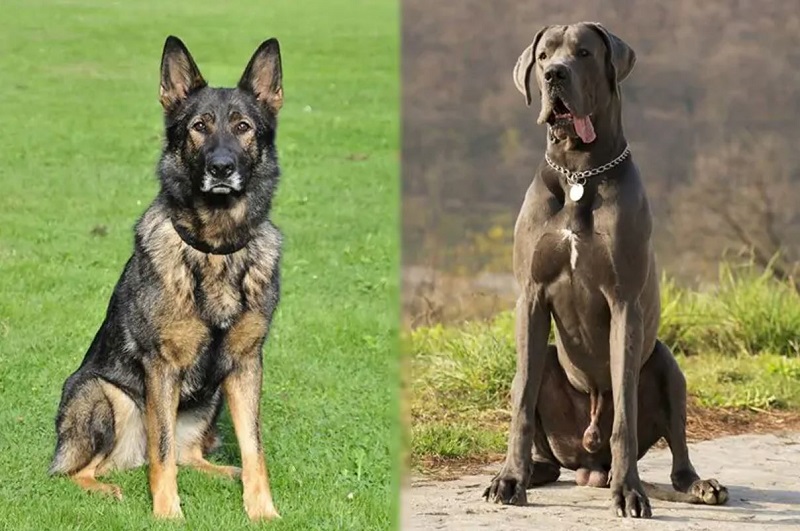
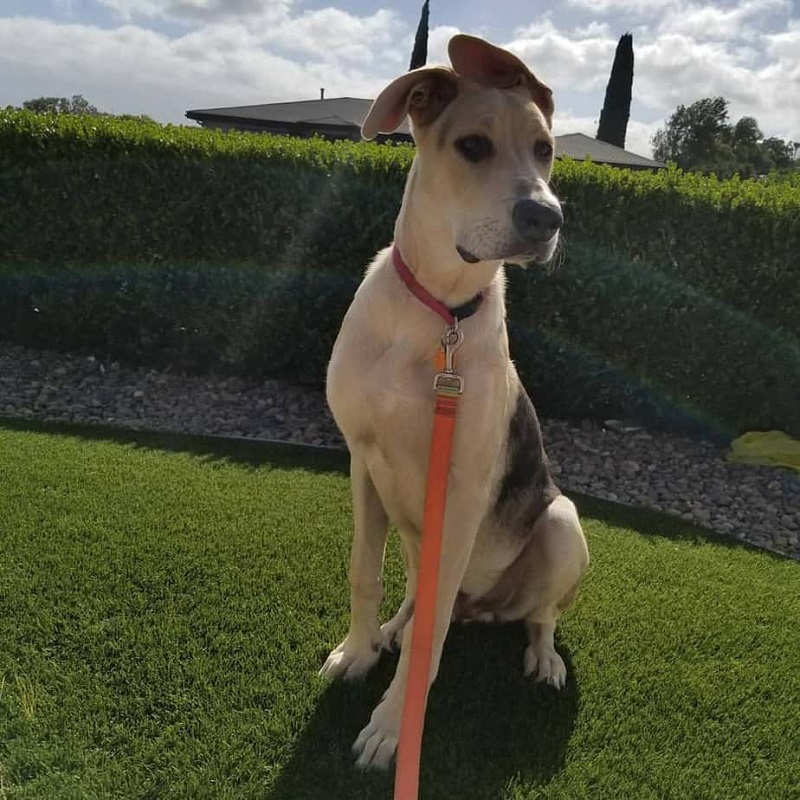


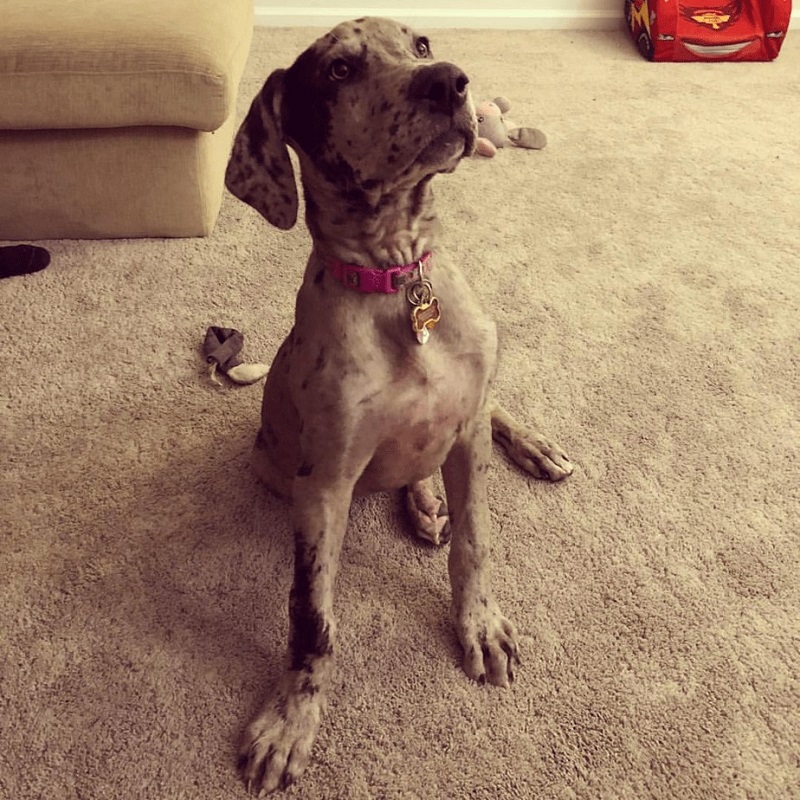
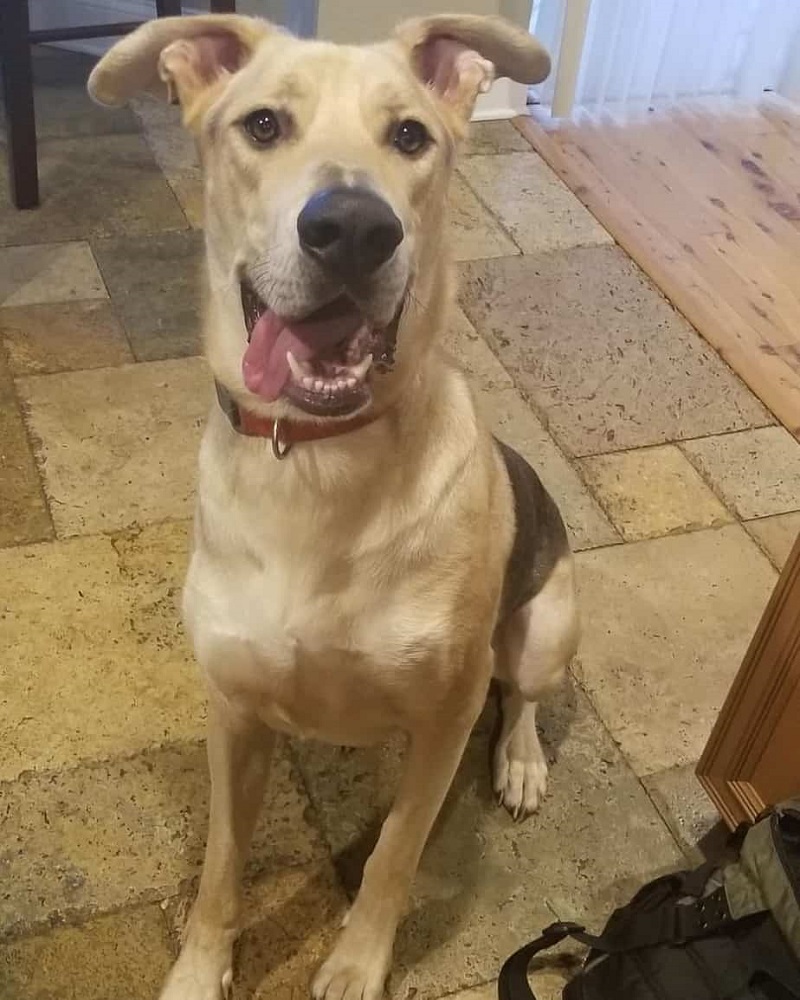


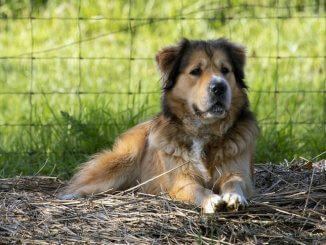
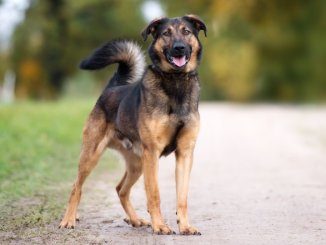
Be the first to comment